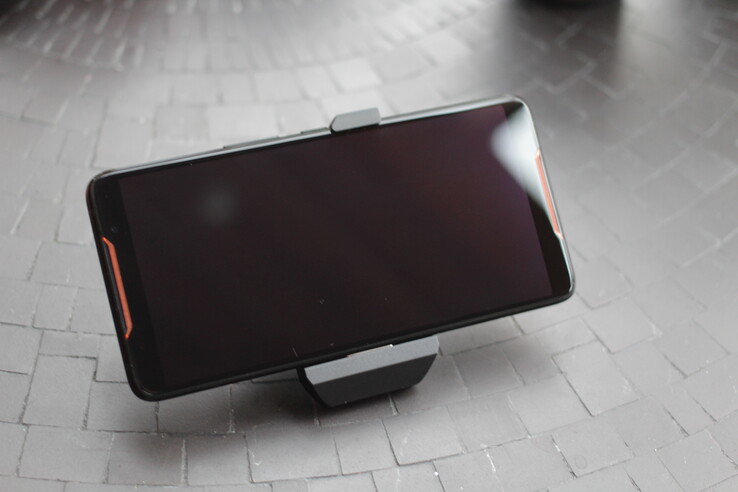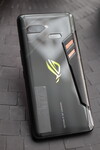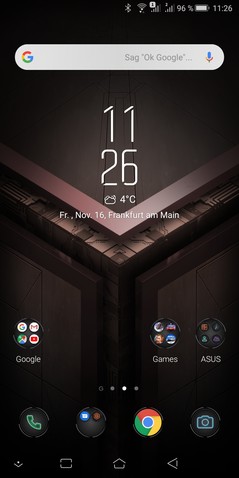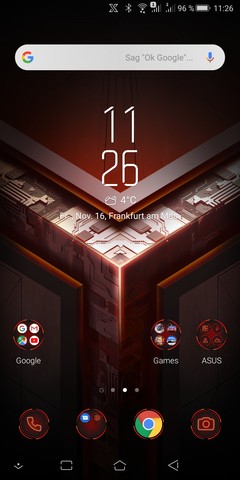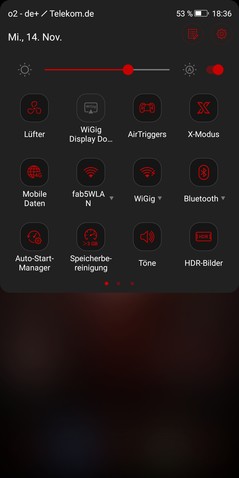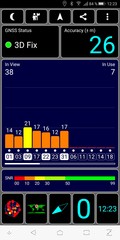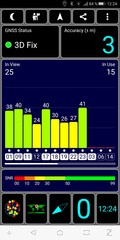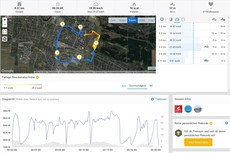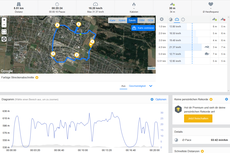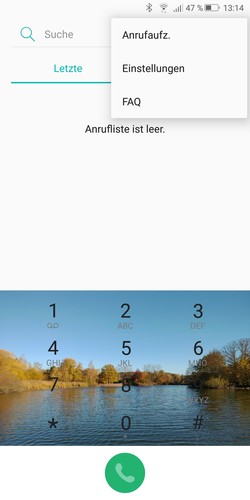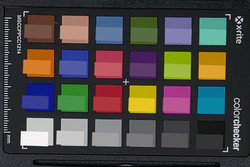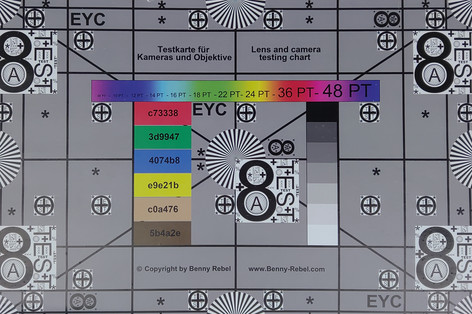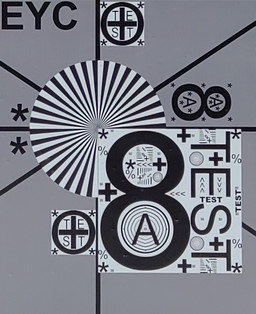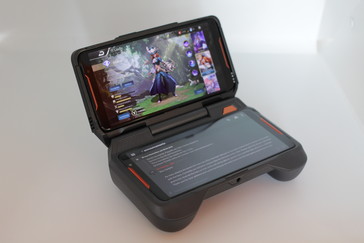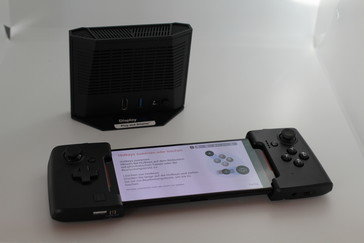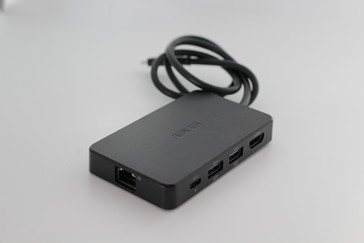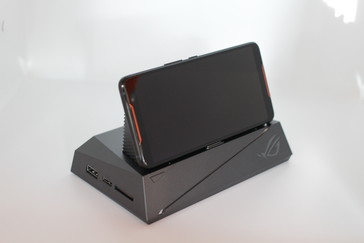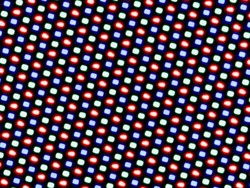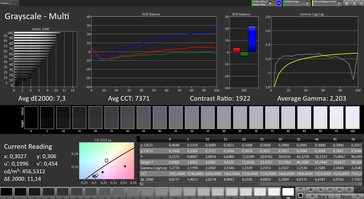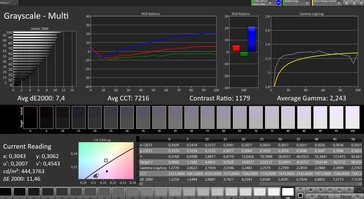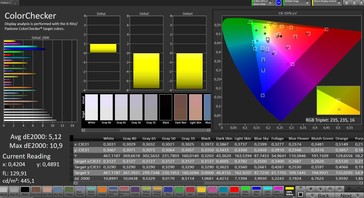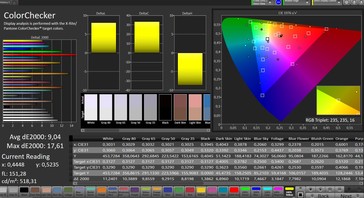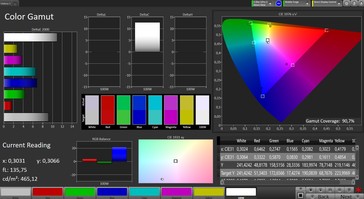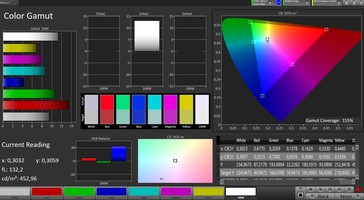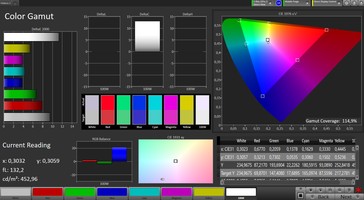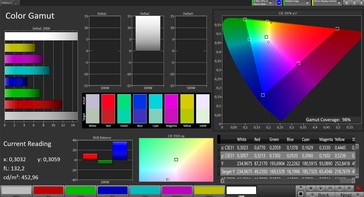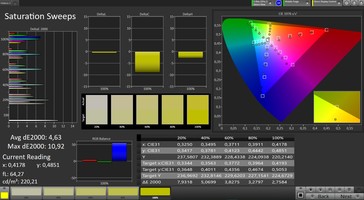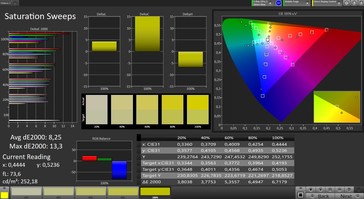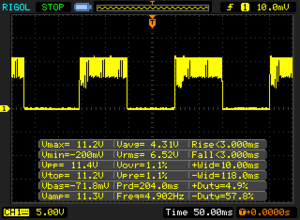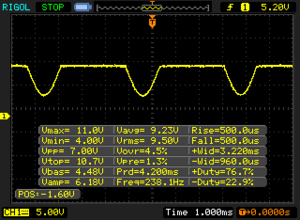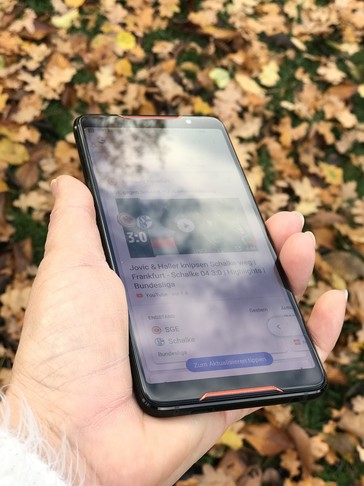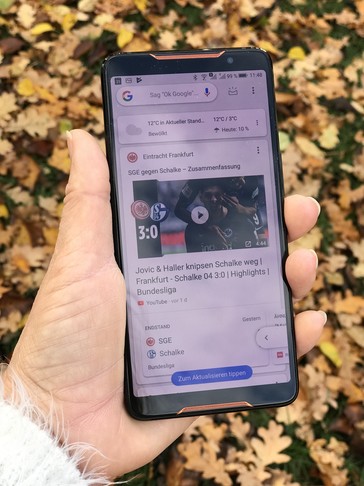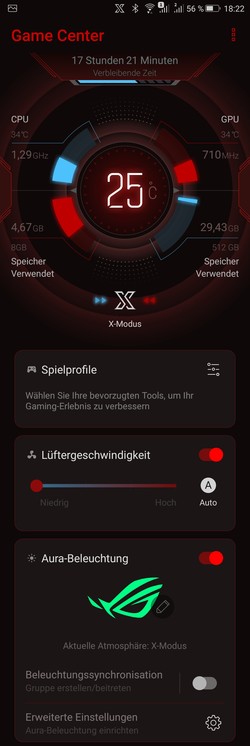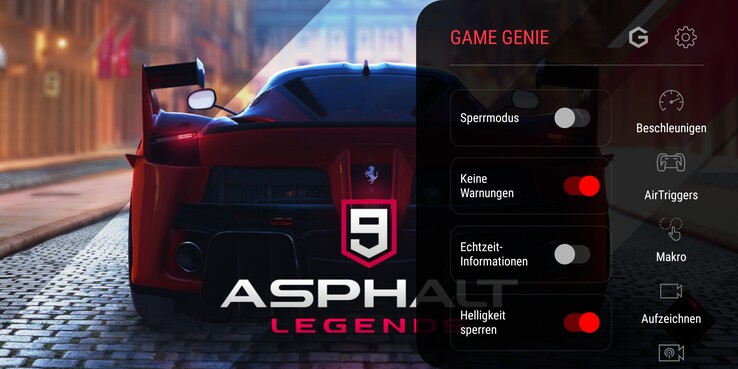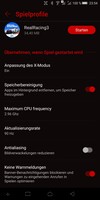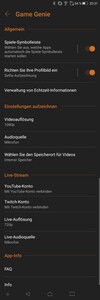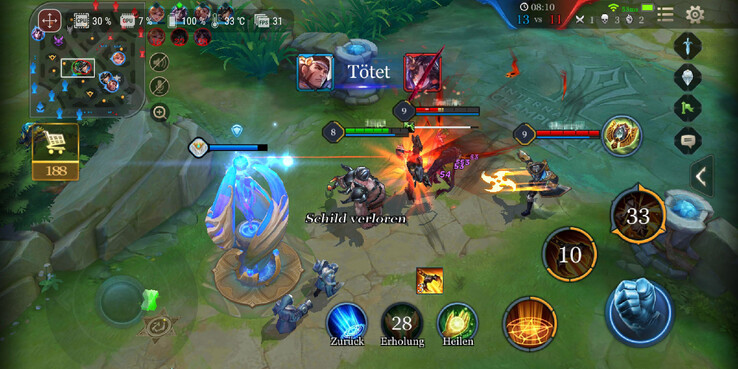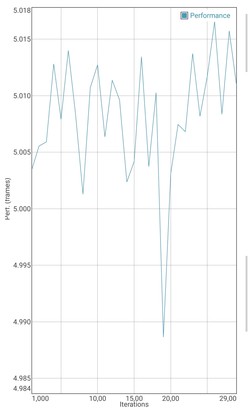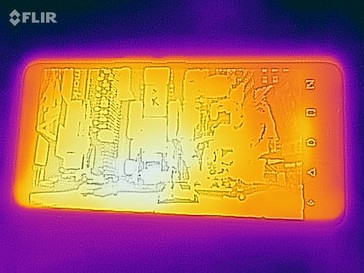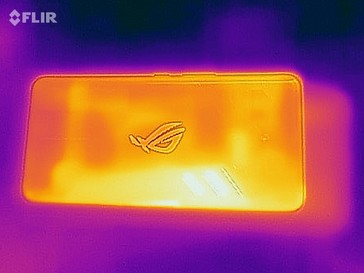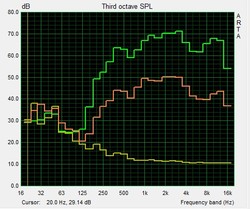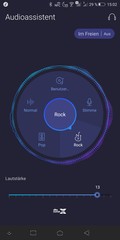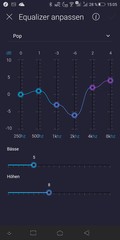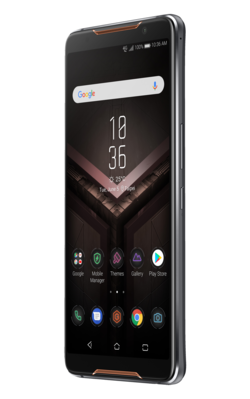ASUS ROG Phone Smartphone Review
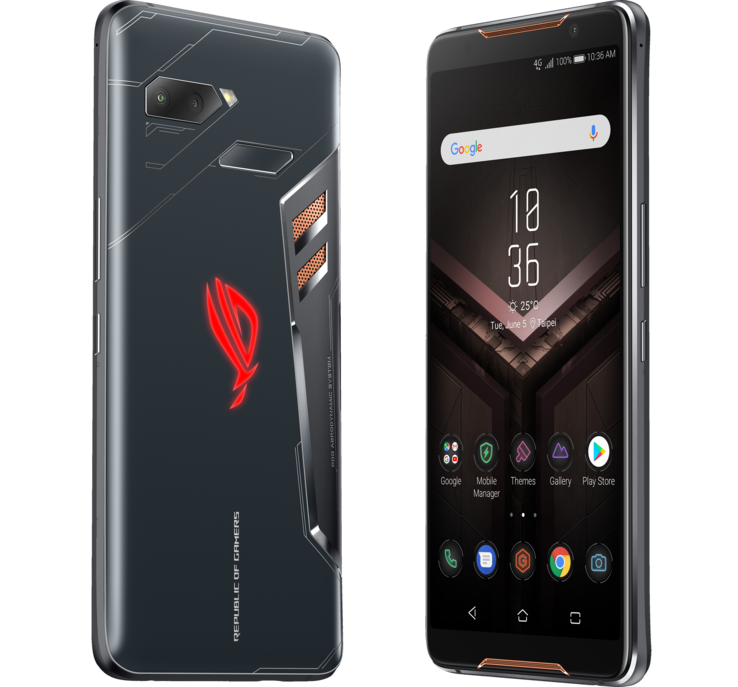
Manufacturers have defined their smartphones in recent years by their camera qualities. However, we have noticed a change in the last year as manufacturers have pivoted to creating gaming smartphones. We suspect that the general public has hardly realised this, even though smartphones have reportedly surpassed the PC as a gaming platform, according to a survey conducted by the Game industry association in Germany. Manufacturers recognise the potential though, not least because gamers are willing to spend a lot of money on good hardware.
Hence, genuine innovation should pay off. ASUS has developed an external AeroActive Cooler to cool the ROG Phone’s powerful components and has integrated trigger buttons within the Phone’s frame to name but a few of the ROG Phone’s features and accessories. We suspect that some people may appreciate these, particularly those who decided not to go for the Razer Phone 2 or the Xiaomi Black Shark with its ancillary hardware.
We have chosen to compare the ASUS ROG Phone against the two gaming smartphones and a selection of the latest flagship devices from other manufacturers. Our comparison devices include the Apple iPhone XS Max, the Huawei Mate 20 Pro and the Sony Xperia XZ3.
Case
Modern smartphones generally look identical; large rectangular slabs that are covered in glass with a metal frame. In short, they look boring and monotonous. ASUS has not reinvented the wheel in this respect, but the ROG Phone’s garish design gives us a clue about its intended use as a gaming phone. Starting at the back, there is a huge Aura RGB ROG logo, which changes colour when performance mode is activated, which ASUS calls X-mode. Activating X-mode also intensifies the colour of the default wallpaper on the stock launcher too. The back case is adorned with hexagonal markings, one of which is a fingerprint sensor, and a long silver accent, behind which sits the vapour chamber cooling system. The front also has dark ROG orange speaker grilles, which juxtapose the device’s black bezels.
The craftsmanship of our test device is excellent. The device is sturdy and hardly flexes when we try to twist it. ASUS has covered the ROG Phone in Corning Gorilla glass, which tapers into the metal frame evenly. The glass seems to have an oleophobic coating as touching the device leaves hardly any fingerprints or residue. The back glass feels smooth to the touch, while the metal frame has a defined edge to it. The power button and volume rocker sit next to each other on the right-hand side of the frame, the former of which has a little more play to within the frame than the latter. Both buttons feel solidly constructed though.
The ROG Phone has three ultrasonic sensor buttons, with two of which acting as triggers when the device is held horizontally. ASUS has subtly coloured their activation areas, but the colouring does not stand out from the rest of the frame. The third button is on the bottom left-hand corner of the device when holding it in portrait mode. In practice, the buttons feel like those that Google and HTC have integrated into their Pixel and HTC U smartphones.
The ROG Phone’s accessories are connected to the device via its dock connector, which can be hidden behind a rubber cover when using the device as a phone. The cover slots into the dock connector and is attached to the frame, so we would recommend exercising some care that you do not lose it. Thankfully, ASUS has included a second cover in the box should you misplace the first. The ROG Phone is a comparatively small device at 158.8 mm x 76.2 mm x 8.3 mm (~6.25 x 3 x 0.32 in), but it weighs a hefty 212 g (~7.47 oz), which is heavier than all but the Razer Phone 2 of our comparison devices.
Connectivity
We cannot complain about the lack of ports. ASUS has included two USB Type-C ports, one USB 2.0 on the underside of the device and one USB 3.1 port located within the dock connector. The dock connector sits in between your hands when gaming, so that users can charge the device without having to alter their grip around a cable. The 48-pin dock connector looks like two USB Type-C ports combined, however, ASUS specifically states to only use the second connector with ROG accessories and not headphones or charging cables.
The ROG Phone has a headphone jack too, which is a rarity for flagship devices released in 2018. Strictly speaking, it has two headphone jacks, the second of which is integrated within the included AeroActive cooler. The cooler also has a USB Type-C port, so users can charge their device and listen to music over wired headphones while gaming without being interrupted by cables.
ASUS has equipped the ROG Phone with flagship-level components too. The device is equipped with a Qualcomm Snapdragon 845 SoC and 4 GB of LPDDR4X RAM. There is up to a whopping 512 GB of storage for games, games, and more games. We suspect that most users will have enough storage left over for plenty of music, photos and videos too. ASUS currently sells the 512-GB version for $1,099 on its website, with the 128-GB costing $899.99. Only the 128-GB version is available to pre-order in Europe though, which is something that we hope ASUS changes as the device does not have expandable storage.
The ROG Phone also supports dual-SIM functionality and has a rear-mounted fingerprint sensor. There is an NFC chip, ac Wi-Fi and Bluetooth 5.0 support too.
Software
The ROG Phone ships with Android 8.1 Oreo, while our test device arrived with 1 September 2018, Android security patches. Google had not yet released the November patch update at the time of testing, but we question why ASUS has updated the ROG Phone to the October security patch. We are interested to see when ASUS updates the ROG Phone to Android 9 Pie, particularly given the degree to which the company has customised 8.1 Oreo. We hope that it will not take too long, as ASUS only has one device for which to optimise the customised OS.
The ROG Phone’s OS has a few tricks up its sleeve. Firstly, there is the X-mode, which illuminates the ROG logos and parts of the UI. ASUS has also incorporated gesture controls akin to those which Google has integrated within Android 9 Pie. Swiping left, right or back to centre on the navigation bar triggers the corresponding onscreen menu button action; i.e. swiping left along the nav bar will trigger the back button, which is supported by a pleasantly light haptic feedback.
ASUS has included plenty of gaming-focussed additional software too. We will cover this in the Games section.
Communication & GPS
The ROG Phone supports all major EDGE, GPRS, 3G and LTE frequencies. The device also supports LTE Cat.13 for up to 150 Mbps upload speeds and LTE Cat.16 for up to 1 Gbps download speeds. The ROG Phone should have enough frequency coverage for worldwide LTE connectivity.
Our test device performed poorly in our Wi-Fi tests though, as demonstrated by our graphics below. The ROG Phone achieved a maximum of less than 110 MBit/s in both iperf3 Client Wi-Fi tests when tested with our Linksys EA8500 reference router. We can somewhat forgive the Xiaomi Black Shark for its equally poor Wi-Fi performance because it is around 50% cheaper than the ROG Phone, but less than 110 MBit/s Wi-Fi speeds are embarrassingly slow for a $900 smartphone. By contrast, our similarly priced comparison devices achieve up to 6 times faster transfer speeds in our tests.
However, the comparatively poor benchmark results do not make a huge difference in daily use. Internet and server speeds may well eradicate any deficit between the ROG Phone and our more expensive comparison devices in this regard. Unfortunately, the ROG Phone has underwhelming Wi-Fi range too. Our test device had a worse Wi-Fi reception than an adjacent iPhone 7 when both devices were playing "Arena of Valor" on the same Wi-Fi network. Wi-Fi reception regularly fluctuated between green and red on our test device, while the iPhone 7 maintained full Wi-Fi reception throughout. In short, the ROG Phone has disappointing Wi-Fi performance; we are unsure whether this is software or hardware related.
The ROG Phone uses GPS, AGPS, GLONASS and BDS for location services. Our test device achieved a satellite fix with up to 26 m (85.3 ft) accuracy when tested indoors. This is better than the Black Shark but is considerably worse than other $900 smartphones. The Huawei Mate 20 Pro achieved an indoor satellite fix with up to 4 m (13.12 ft) by comparison. The ROG Phone’s GPS accuracy improves to 3 m (~10 ft) outside, which is more respectable.
We also took our test device on a bike ride to compare its navigation accuracy against a professional navigation device, the Garmin Edge 520. The ROG Phone plotted a 200 m (656 ft) shorter route than the 5.51 km (3.42 miles) route which the Garmin recorded us having cycled. The ROG Phone did not plot our location as frequently as the Garmin did, which resulted in our test device taking shortcuts as demonstrated in our photos. Overall, the ROG Phone is accurate enough for general navigation tasks, but not for instances where you need precise location data.
Telephone Features & Call Quality
The ROG Phone uses the same telephony suite of apps as those that ASUS preinstalls on its ZenFone devices. The Phone app supports call recording and can be customised to display your wallpaper behind your contact list or in the dialler, which is a nice touch.
Unfortunately, the device does not support VoLTE or VoWiFi. Moreover, while the ROG Phone supports 4G on either SIM card slot, 4G will only work with one SIM simultaneously.
Our test device has decent call quality over the earpiece, headphones or speakerphone. The ROG Phone has three microphones that filter out ambient noise well, which particularly improved out call partner’s comprehension of what we were saying. The microphones are sensitive enough to separate multiple voices on one call too.
Cameras
The ROG Phone has two 12 MP rear-facing cameras and an 8 MP front-facing sensor. The main rear-facing sensor is a Sony IMX363 Dual Pixel sensor, which has a 26.6 mm (35 mm KB equivalent) focal length and an f/1.7 aperture. ASUS has chosen a 120° wide-angle sensor for the ROG Phone’s secondary rear-facing camera, which we have determined as having an f/2.0 aperture. Unfortunately, ASUS supplied no further information about the sensor, nor could we find out any other information either.
The difference in quality between the two sensors is obvious, as demonstrated by our photos below. The main sensor can capture fine details more clearly, particularly in the foliage and the grass. The default camera app can use data from both sensors to create bokeh effect photos that look good by smartphone standards, albeit with a few image artefacts.
The ROG Phone performed in our comparison photos against the OnePlus 5T and the iPhone XS Max. Our test device cannot capture objects in the same detail as our comparison devices, but it illuminates dark areas better without overexposing brighter areas. The difference is recognisable in our first two comparison scenes. The ROG Phone impresses in low-light shots too. Our test device exposed our third test scene well and reproduced objects more sharply than our comparison devices.
The front-facing camera is not at the same level as the main rear-facing camera. The 8 MP sensor and the default software struggles to render hair strands correctly in bokeh effect photos, which tend to get blended into the background. Overall, the camera takes passable photos, but details are lacking, while bright areas look overblown.
We also subjected the ROG Phone to further camera tests under controlled lighting conditions with ColorChecker Passport. Our test device generally reproduces colours too darkly compared to the reference colour, especially with white and black tones.
Our test device captured our test chart well though. The resulting photo is clear and detailed. The bottom left-hand corner of the photo lacks the same degree of sharpness as the rest of the image though.
Accessories & Warranty
ASUS includes its AeroActive Cooler in the box, along with a USB Type-C to Type-C cable, a SIM tool, a second dock connector rubber cover, and some device-specific literature. Please see our Guarantees, Return policies and Warranties FAQ for country-specific warranty information.
The company currently sells five other accessories that are specific to the ROG Phone too. Firstly, there is the TwinView Dock, which transforms the ROG Phone into a Nintendo DS-esque device. The dock has a secondary display, two physical buttons, a headphone jack and a 6,000 mAh battery. We could only open other apps like YouTube and Discord on the secondary display during testing, but ASUS has stated Asphalt 9: Legends, FreeFire and ShadowGun will soon support multiple displays. The TwinView Dock and ROG Phone weigh 626 g (22.08 oz), which feels heavy to hold for such a compact device.
ASUS has also created the Mobile Desktop Dock and the Professional Dock, which are confusingly named. The former is the larger of the two and weighs 400 g (14.10 oz), while the latter looks like a standard portable USB Type-C hub. The Professional Dock has two USB 3.1 Type-A ports, one USB 3.1 Type-C port, a 4K HDMI port and an RJ45 Gigabit Ethernet port. ASUS has crammed 11 ports into the Mobile Desktop Dock though, including a full-sized SD card slot, a SATA slot, a USB Micro B 3.0 port and two DisplayPort 1.3 ports among others.
The final two accessories are the WiGig Dock and the Gamevice, which are designed for gaming. The WiGig Dock uses 802.11ad with up to 4.6 Gbps transfer speeds to wirelessly transmit the ROG Phone’s display to an external monitor or TV at a 20 ms latency. The WiGig Dock has a single HDMI output and one USB 3.0 Type-A port. The Gamevice is a physical controller that hooks around the ROG Phone and weighs 125 g (4.41 oz) to give the feel of an Xbox or PlayStation controller.
The ROG Phone accessories are expensive. The total cost for all five at the time of writing is $1,169.95, which brings the total cost, including the ROG Phone to over $2,000 for the 128 GB-version. We have included a breakdown of how much each accessory costs below:
| Accessory | Price - US |
|---|---|
| Gamevice | $89.99 |
| Mobile Desktop Dock | $229.99 |
| Professional Dock | $119.99 |
| TwinView Dock | $399.99 |
| WiGig Dock | $329.99 |
Input Devices & Operation
ASUS preinstalls Google GBoard as the default keyboard, which functions just as well as on other devices. The ROG Phone delivers subtle haptic feedback when an onscreen key is pressed, while the touchscreen responded reliably and quickly throughout testing. The display has a smooth finish that we found easy to use. Moreover, tapping the top-left pixel of the display automatically launches the News Center app, which is handy.
We were initially sceptical of how well the fingerprint sensor would work given its rhombus shape. However, it unlocked our test device quickly throughout testing. Its positioning is ideal for those who are right-handed, although lefties will need to adjust their grip and move their index finger closer to their thumb.
Display
The ROG Phone has a 6-inch AMOLED display that runs at a 2,160x1,080 native resolution with a 2:1 aspect ratio. Please note that this may be referred to elsewhere as an 18:9 aspect ratio. Our test device achieves an average maximum brightness of 637 cd/m² according to X-Rite i1Pro 2, a value which is only beaten by the iPhone XS Max of our comparison devices. Interestingly, our brightness values are higher than ASUS’ specifications, which claim that the display can reach up to 550 cd/m² maximum brightness. The display is only 83% uniformly lit though, which is noticeably lower than all our comparison devices. Solid blocks of colour may look rather uneven compared to the Black Shark or the Razer Phone 2, for example. On a different note, ASUS has included a blue-light filter, which users can set to turn on between certain times.
The 6-inch display has a pixel density of 402 PPI, which is comparatively low for a $900 smartphone. However, the difference in image sharpness compared to devices with higher resolution displays is minimal in our opinion. The display has a 90 Hz refresh rate though, a feature that few other devices have. Moreover, the panel has 1 ms grey to grey response times, the combination of which should ensure a smoother gameplay than on other Snapdragon 845 powered devices.
| |||||||||||||||||||||||||
Brightness Distribution: 83 %
Center on Battery: 597 cd/m²
Contrast: ∞:1 (Black: 0 cd/m²)
ΔE ColorChecker Calman: 5.12 | ∀{0.5-29.43 Ø4.77}
ΔE Greyscale Calman: 7.3 | ∀{0.09-98 Ø5}
114.9% sRGB (Calman 2D)
Gamma: 2.203
CCT: 7371 K
| Asus ROG Phone AMOLED, 2160x1080, 6" | Razer Phone 2 IGZO LCD, UltraMotion 120 Hz Display, 2560x1440, 5.7" | Huawei Mate 20 Pro OLED, 3120x1440, 6.3" | Apple iPhone Xs Max OLED, 2688x1242, 6.5" | Xiaomi Black Shark IPS, 2160x1080, 6" | |
|---|---|---|---|---|---|
| Screen | 20% | 36% | 40% | -3% | |
| Brightness middle (cd/m²) | 597 | 600 1% | 576 -4% | 656 10% | 549 -8% |
| Brightness (cd/m²) | 637 | 577 -9% | 582 -9% | 659 3% | 541 -15% |
| Brightness Distribution (%) | 83 | 92 11% | 90 8% | 88 6% | 95 14% |
| Black Level * (cd/m²) | 0.31 | 0.42 | |||
| Colorchecker dE 2000 * | 5.12 | 3.43 33% | 1.3 75% | 1.7 67% | 6.08 -19% |
| Colorchecker dE 2000 max. * | 10.9 | 6.36 42% | 3.5 68% | 2.8 74% | 10.69 2% |
| Greyscale dE 2000 * | 7.3 | 4.4 40% | 1.6 78% | 1.7 77% | 6.6 10% |
| Gamma | 2.203 100% | 2.388 92% | 2.18 101% | 1.998 110% | 2.305 95% |
| CCT | 7371 88% | 6069 107% | 6561 99% | 6487 100% | 8399 77% |
| Contrast (:1) | 1935 | 1307 |
* ... smaller is better
Screen Flickering / PWM (Pulse-Width Modulation)
| Screen flickering / PWM detected | 219 Hz | ≤ 99 % brightness setting | |
The display backlight flickers at 219 Hz (worst case, e.g., utilizing PWM) Flickering detected at a brightness setting of 99 % and below. There should be no flickering or PWM above this brightness setting. The frequency of 219 Hz is relatively low, so sensitive users will likely notice flickering and experience eyestrain at the stated brightness setting and below. In comparison: 53 % of all tested devices do not use PWM to dim the display. If PWM was detected, an average of 8084 (minimum: 5 - maximum: 343500) Hz was measured. | |||
The ROG Phone has a theoretically infinite contrast ratio thanks to the AMOLED technology used, which can individually switch off pixels for absolute blacks. ASUS has included multiple colour modes including a wide colour gamut that the company claims has 108.6% DCI P3 and 145% sRGB colour space coverage. Our spectrophotometer shows that the wide colour gamut has the largest DeltaE colour deviations and that is most accurate against the AdobeRGB colour space. Strikingly, the standard profile generates a much stronger blue tint than the wide colour gamut, which has a much warmer colour temperature.
Display Response Times
| ↔ Response Time Black to White | ||
|---|---|---|
| 6 ms ... rise ↗ and fall ↘ combined | ↗ 3 ms rise | |
| ↘ 3 ms fall | ||
| The screen shows very fast response rates in our tests and should be very well suited for fast-paced gaming. In comparison, all tested devices range from 0.1 (minimum) to 240 (maximum) ms. » 17 % of all devices are better. This means that the measured response time is better than the average of all tested devices (20.2 ms). | ||
| ↔ Response Time 50% Grey to 80% Grey | ||
| 1 ms ... rise ↗ and fall ↘ combined | ↗ 0.5 ms rise | |
| ↘ 0.5 ms fall | ||
| The screen shows very fast response rates in our tests and should be very well suited for fast-paced gaming. In comparison, all tested devices range from 0.165 (minimum) to 636 (maximum) ms. » 3 % of all devices are better. This means that the measured response time is better than the average of all tested devices (31.6 ms). | ||
The ROG Phone is easy to use outdoors thank its bright and contrast-rich display. The glossy display will catch reflections in direct sunlight, although they did not prevent us from being able to read what was being displayed onscreen.
Performance
The ROG Phone is powered by a Qualcomm Snapdragon 845 SoC, which integrates a Qualcomm Adreno 630 GPU. The Snapdragon 845 is currently Qualcomm’s flagship SoC, although we expect the company to release a successor, the Snapdragon 8150, in 2019. The ROG Phone should epitomise the best of what the Snapdragon 845 has to offer too. ASUS promises that it subjects each SoC to speed binning to guarantee that they all reach their advertised 2.96 GHz maximum clock speed. This should mean that all ROG Phones perform comparably.
Our test device consistently finished above all our Snapdragon 845 powered devices in benchmarks, although the performance difference between the Razer Phone 2 and the Xiaomi Black Shark is often minor. All devices have vapour chamber cooling systems, which should minimise thermal throttling. The ROG Phone finished below the A12 Bionic powered iPhone XS Max in most benchmarks and occasionally finished short of the Mate 20 Pro with its Kirin 980 SoC. Overall, ASUS has done a great job at optimising the ROG Phone’s Snapdragon 845 SoC.
| PCMark for Android | |
| Work performance score (sort by value) | |
| Asus ROG Phone | |
| Razer Phone 2 | |
| Huawei Mate 20 Pro | |
| Average Qualcomm Snapdragon 845 (7998 - 13211, n=26) | |
| Work 2.0 performance score (sort by value) | |
| Asus ROG Phone | |
| Razer Phone 2 | |
| Huawei Mate 20 Pro | |
| Xiaomi Black Shark | |
| Average Qualcomm Snapdragon 845 (7360 - 9868, n=27) | |
| AnTuTu v7 - Total Score (sort by value) | |
| Asus ROG Phone | |
| Razer Phone 2 | |
| Huawei Mate 20 Pro | |
| Apple iPhone Xs Max | |
| Xiaomi Black Shark | |
| Average Qualcomm Snapdragon 845 (246366 - 299878, n=27) | |
| AnTuTu v6 - Total Score (sort by value) | |
| Asus ROG Phone | |
| Razer Phone 2 | |
| Huawei Mate 20 Pro | |
| Xiaomi Black Shark | |
| Average Qualcomm Snapdragon 845 (162183 - 242953, n=23) | |
The ROG Phone performs admirably in browser benchmarks too. Our test device finished third behind the iPhone XS Max and the Mate 20 Pro in all benchmarks, but we expected as much. However, the ROG Phone outperforms the average of all Snapdragon 845 powered devices that we have tested so far, which includes the LG G7 ThinQ among others. The ROG Phone outscores the class average too, which includes devices like the Samsung Galaxy Note 9.
| JetStream 1.1 - Total Score | |
| Apple iPhone Xs Max (Safari 12) | |
| Huawei Mate 20 Pro (Chrome 69) | |
| Asus ROG Phone (Chrome 70) | |
| Razer Phone 2 (Chrome 68) | |
| Average Qualcomm Snapdragon 845 (22.5 - 90.9, n=25) | |
| Xiaomi Black Shark | |
| Octane V2 - Total Score | |
| Average of class Smartphone (2228 - 126661, n=194, last 2 years) | |
| Apple iPhone Xs Max (Safari 12) | |
| Huawei Mate 20 Pro (Chrome 69) | |
| Asus ROG Phone (Chrome 70) | |
| Razer Phone 2 (Chrome 68) | |
| Average Qualcomm Snapdragon 845 (3991 - 18275, n=28) | |
| Xiaomi Black Shark (Firefox 61) | |
| Mozilla Kraken 1.1 - Total | |
| Average Qualcomm Snapdragon 845 (2154 - 11204, n=28) | |
| Xiaomi Black Shark (Firefox 61) | |
| Razer Phone 2 (Chrome 68) | |
| Asus ROG Phone (Chrome 70) | |
| Huawei Mate 20 Pro (Chrome 69) | |
| Average of class Smartphone (257 - 28190, n=154, last 2 years) | |
| Apple iPhone Xs Max (Safari 12) | |
| WebXPRT 3 - Overall | |
| Average of class Smartphone (38 - 380, n=30, last 2 years) | |
| Apple iPhone Xs Max (Safari 12) | |
| Huawei Mate 20 Pro (Chrome 69) | |
| Asus ROG Phone (Chrome 70) | |
| Razer Phone 2 (Chrome 68) | |
| Average Qualcomm Snapdragon 845 (19 - 103, n=17) | |
| Xiaomi Black Shark (Firefox 61) | |
| WebXPRT 2015 - Overall | |
| Apple iPhone Xs Max (Safari 12) | |
| Huawei Mate 20 Pro (Chrome 69) | |
| Asus ROG Phone (Chrome 70) | |
| Razer Phone 2 (Chrome 68) | |
| Xiaomi Black Shark (Firefox 61) | |
| Average Qualcomm Snapdragon 845 (96 - 291, n=23) | |
* ... smaller is better
Our test device is the 512-GB version, but this is currently only available in the US as we mentioned earlier. European users will have to make do with the 128-GB model for the time being it seems. 128-GB is a lot of storage, but it may fill up quickly, particularly since games like "Fortnite" require over 2 GB of space.
ASUS has equipped the ROG Phone was fast UFS 2.1 memory, which outperformed all our comparison devices but the Mate 20 Pro in AndroBench 3-5. Users should not have to wait around for games or data to load with the ROG Phone.
| Asus ROG Phone | Razer Phone 2 | Huawei Mate 20 Pro | Xiaomi Black Shark | Sony Xperia XZ3 | Average 512 GB UFS 2.1 Flash | Average of class Smartphone | |
|---|---|---|---|---|---|---|---|
| AndroBench 3-5 | -29% | 4% | -13% | -29% | -6% | 278% | |
| Sequential Read 256KB (MB/s) | 725 | 733 1% | 853 18% | 742 2% | 681 -6% | 682 ? -6% | 2235 ? 208% |
| Sequential Write 256KB (MB/s) | 243.3 | 194.8 -20% | 196.4 -19% | 199.6 -18% | 196.1 -19% | 281 ? 15% | 1871 ? 669% |
| Random Read 4KB (MB/s) | 141.6 | 124.3 -12% | 157.4 11% | 127.2 -10% | 135.7 -4% | 136.4 ? -4% | 297 ? 110% |
| Random Write 4KB (MB/s) | 152 | 23.99 -84% | 157.8 4% | 114.1 -25% | 22.22 -85% | 106 ? -30% | 343 ? 126% |
Games
The performance of the Adreno 630 GPU is beyond question, particularly as ASUS has preselected the best Snapdragon 845 SoCs. The positional sensors worked perfectly throughout our tests, especially in fast-paced racing games like "Real Racing". "Arena of Valor" warned us that our device had a weak Wi-Fi connection as we mentioned earlier, but we experienced no latency issues while playing. Simpler games like "Zen Pinball" took advantage of the 90 Hz refresh rate, although most games averaged closer to 60 FPS as they do in many other Snapdragon 845 powered devices.
ASUS has included numerous pieces of gaming-focused software including X-mode, which not only alters the RGB logos but also improves performance and adds overlays within games, screenshots of which we have included below. These settings are contained within the Game Center, which includes memory management and battery options, among other information. We have included a screenshot demonstrating what other information and options the Game Center collates.
One of the ROG Phone’s special features is its ultrasonic trigger buttons that are integrated within its frame. Users can configure pressure activation up to 20 g (0.7 oz), which may not sound like much, but we found them difficult to press unless we gripped our test device with our thumbs on virtual buttons like in "Fortnite". ASUS claims that the trigger buttons have a 10 ms latency.
There is also a Game Genie menu, which allows users to configure AirTriggers. Game Genie has settings for recording games among others. Game Genie can be launched via the navigation bar or within Game Center. Overall, ASUS has designed all its additional gaming software with the same ROG styling as we have seen with its desktop offerings.
| Subway Surfers | |||
| Settings | Value | ||
| default | 60 fps | ||
| Arena of Valor | |||
| Settings | Value | ||
| min | 31 fps | ||
| high HD | 61 fps | ||
Emissions
Temperature
ASUS has integrated a vapour chamber cooling system within the ROG Phone to improve heat dissipation. The cooling system is a large copper heat spreader that has liquid inside it, which evaporates when the device heats up to spread the excess heat evenly rather than letting it concentrate in one area. The included cooler should further improve thermal management during intensive tasks like gaming.
We subjected the ROG Phone to a loop of the GFXBench Manhattan benchmark to test how well it can sustain performance under load. Our test device performed remarkably well and demonstrated the efficiency of ASUS’ cooling solution. Framerates remained largely stable throughout, except for a slight drop at around the 19th pass through. The graph makes this drop look dramatic, but it only represents a 1% drop. Moreover, the benchmark results show that the ROG Phone scored slightly higher at the end of the loop than it did at the start. By contrast, most flagship smartphones experience noticeable drops in performance by the end of a Manhattan looped benchmark. In short, users should not experience any thermal throttling with the ROG Phone.
Surface temperatures remain surprisingly cool at idle, with our test device averaging 27.2 °C (~81 °F). The centre of the bottom third of the display reaches a maximum of 28.7 °C (~84 °F), but overall the ROG Phone distributes heat evenly when idling. Predictably, surface temperatures rise when the device is operating under load. Our test device averages 40.85 °C (~105.5 °F) in these conditions and reaches a maximum of 45 °C (~113 °F) around the air vents. Overall, the ROG Phone will feel warm to the touch when it is pushed hard, but not dangerously so.
(±) The maximum temperature on the upper side is 44 °C / 111 F, compared to the average of 35.2 °C / 95 F, ranging from 21.9 to 247 °C for the class Smartphone.
(±) The bottom heats up to a maximum of 45 °C / 113 F, compared to the average of 34 °C / 93 F
(+) In idle usage, the average temperature for the upper side is 27.2 °C / 81 F, compared to the device average of 32.9 °C / 91 F.
Speakers
The ROG Phone has front-firing stereo speakers, which are each powered by an NXP 9874 amplifier. The speakers get as loud as our best comparison devices, but they cannot reproduce bass tones as loudly as the Mate 20 Pro. ASUS has included a graphic equalizer though, which can noticeably change how the speakers sound. There are also five presets should you not wish to fine-tune the speakers with the graphic equalizer.
The device supports DTS, which theoretically creates 7.1 surround sound for headphones that work with the technology. There is also Qualcomm aptX HD integration for CD-esque audio quality over Bluetooth. Audio sounds good when outputted over Bluetooth or via the headphone jack.
Asus ROG Phone audio analysis
(±) | speaker loudness is average but good (79.6 dB)
Bass 100 - 315 Hz
(-) | nearly no bass - on average 21.4% lower than median
(±) | linearity of bass is average (10.6% delta to prev. frequency)
Mids 400 - 2000 Hz
(+) | balanced mids - only 3.6% away from median
(+) | mids are linear (6.2% delta to prev. frequency)
Highs 2 - 16 kHz
(+) | balanced highs - only 4.2% away from median
(+) | highs are linear (4.8% delta to prev. frequency)
Overall 100 - 16.000 Hz
(±) | linearity of overall sound is average (19.8% difference to median)
Compared to same class
» 31% of all tested devices in this class were better, 8% similar, 61% worse
» The best had a delta of 11%, average was 35%, worst was 134%
Compared to all devices tested
» 50% of all tested devices were better, 7% similar, 43% worse
» The best had a delta of 4%, average was 24%, worst was 134%
Razer Phone 2 audio analysis
(±) | speaker loudness is average but good (77.1 dB)
Bass 100 - 315 Hz
(-) | nearly no bass - on average 23% lower than median
(±) | linearity of bass is average (10.3% delta to prev. frequency)
Mids 400 - 2000 Hz
(+) | balanced mids - only 1.8% away from median
(+) | mids are linear (3.4% delta to prev. frequency)
Highs 2 - 16 kHz
(+) | balanced highs - only 1.8% away from median
(+) | highs are linear (2.9% delta to prev. frequency)
Overall 100 - 16.000 Hz
(±) | linearity of overall sound is average (17.1% difference to median)
Compared to same class
» 10% of all tested devices in this class were better, 8% similar, 83% worse
» The best had a delta of 11%, average was 35%, worst was 134%
Compared to all devices tested
» 30% of all tested devices were better, 8% similar, 62% worse
» The best had a delta of 4%, average was 24%, worst was 134%
Huawei Mate 20 Pro audio analysis
(±) | speaker loudness is average but good (77.7 dB)
Bass 100 - 315 Hz
(±) | reduced bass - on average 14.2% lower than median
(±) | linearity of bass is average (12.4% delta to prev. frequency)
Mids 400 - 2000 Hz
(±) | higher mids - on average 6.7% higher than median
(+) | mids are linear (5.5% delta to prev. frequency)
Highs 2 - 16 kHz
(±) | higher highs - on average 7.3% higher than median
(+) | highs are linear (6.7% delta to prev. frequency)
Overall 100 - 16.000 Hz
(±) | linearity of overall sound is average (22.9% difference to median)
Compared to same class
» 51% of all tested devices in this class were better, 7% similar, 43% worse
» The best had a delta of 11%, average was 35%, worst was 134%
Compared to all devices tested
» 67% of all tested devices were better, 6% similar, 27% worse
» The best had a delta of 4%, average was 24%, worst was 134%
Battery Life
Power Consumption
The ROG Phone is a power efficient device at idle and one which consumes considerably less power than the average of Snapdragon 845 devices that we have tested. Our test device consumes a minimum of 0.6 W at idle, which is only equalled by the Razer Phone 2 of our comparison devices. Moreover, the ROG Phone averages 3.8 W under load, which is lower than all our comparison devices. However, power consumption can rise to a maximum of 10.6 W, which is around 4 W higher than our non-gaming comparison devices, but 1.6 W less than the Razer Phone 2. Overall, ASUS has done a great job at optimising the ROG Phone’s power consumption.
| Off / Standby | |
| Idle | |
| Load |
|
Key:
min: | |
| Asus ROG Phone 4000 mAh | Razer Phone 2 4000 mAh | Huawei Mate 20 Pro 4200 mAh | Apple iPhone Xs Max 3174 mAh | Xiaomi Black Shark 4000 mAh | Sony Xperia XZ3 3300 mAh | Average Qualcomm Snapdragon 845 | Average of class Smartphone | |
|---|---|---|---|---|---|---|---|---|
| Power Consumption | -33% | -24% | -10% | -19% | 2% | -21% | -26% | |
| Idle Minimum * (Watt) | 0.6 | 0.6 -0% | 0.95 -58% | 1 -67% | 0.8 -33% | 0.8 -33% | 0.862 ? -44% | 0.847 ? -41% |
| Idle Average * (Watt) | 1.4 | 1.5 -7% | 2.17 -55% | 1.4 -0% | 1.5 -7% | 1.2 14% | 1.728 ? -23% | 1.448 ? -3% |
| Idle Maximum * (Watt) | 1.7 | 2.6 -53% | 2.25 -32% | 1.7 -0% | 2.3 -35% | 1.5 12% | 2.07 ? -22% | 1.633 ? 4% |
| Load Average * (Watt) | 3.8 | 7.2 -89% | 4.47 -18% | 4.6 -21% | 4.8 -26% | 4.8 -26% | 4.87 ? -28% | 6.96 ? -83% |
| Load Maximum * (Watt) | 10.6 | 12.3 -16% | 6.15 42% | 6.7 37% | 10.1 5% | 6.2 42% | 9.27 ? 13% | 11.3 ? -7% |
* ... smaller is better
Battery Life
The ROG Phone has a 4,000 mAh battery, which unfortunately delivered underwhelming battery life in our tests. Our test device lasted eighteen hours and thirty-minutes at idle, which is a respectable runtime. However, it is well beaten by the Mate 20 Pro, the iPhone XS Max and the Xiaomi Black Shark. The ROG also lasted a disappointing eight hours and fifty-seven minutes in our Wi-Fi battery life test, which is 44% short of the runtime that the Mate 20 Pro achieved and 39% behind the iPhone XS Max, the latter of which has only a 3,174 mAh battery. Overall, the ROG Phone finishes behind the Mate 20 Pro, the iPhone XS Max and the Black Shark in all our battery life tests except for our H.264 video loop battery life test, in which it finished third and one minute behind the XS Max in second place.
It is worth bearing in mind that the AeroActive cooler requires power to work and will further reduce battery life when used. However, it does cool the device, which is a good thing. Happily, it is easy and unobtrusive to charge the ROG Phone with the AeroActive cooler attached because the latter has a USB Type-C port. Gamers can charge their ROG Phones without cables getting in their way.
The ROG Phone supports Qualcomm QuickCharge 4.0 and ASUS’ HyperCharge, which is like OnePlus’ Fast Charge. The 30-W included charger (10V/3A) recharges the ROG Phone fully in around 105 minutes and gives it a few hours use after just 20 minutes of charge.
| Asus ROG Phone 4000 mAh | Razer Phone 2 4000 mAh | Huawei Mate 20 Pro 4200 mAh | Apple iPhone Xs Max 3174 mAh | Xiaomi Black Shark 4000 mAh | |
|---|---|---|---|---|---|
| Battery runtime | 9% | 35% | 15% | 26% | |
| Reader / Idle (h) | 18.5 | 27.2 47% | 29.1 57% | 21.8 18% | 29.2 58% |
| H.264 (h) | 13.3 | 12.4 -7% | 14.2 7% | 13.4 1% | 12.5 -6% |
| WiFi v1.3 (h) | 8.9 | 8.9 0% | 12.8 44% | 12.4 39% | 11.9 34% |
| Load (h) | 3.6 | 3.4 -6% | 4.7 31% | 3.7 3% | 4.2 17% |
Pros
Cons
Verdict
ASUS has set new standards with its ROG Phone, although the first generation has room for improvement. The company has gone all out with the ROG Phone’s gaming accessories, which are rather expensive. Moreover, its 90 Hz display is ideal for gaming, while its ultrasonic triggers and gaming software are useful additions.
The ASUS ROG Phone sets new standards for mobile smartphone gaming. The device is powerful, and ASUS has tried to create a gaming ecosystem with numerous accessories, but the device has a few drawbacks that prevent it from garnering top marks.
The AURA RGB lighting is a nice touch, while the vapour chamber cooling system is great at dissipating heat. Moreover, the cameras are better than we expected. Unfortunately, our test device has weak Wi-Fi and underwhelming battery life. Overall, the ROG Phone is a great smartphone but has room for improvement.
Asus ROG Phone
- 11/18/2018 v6 (old)
Inge Schwabe




